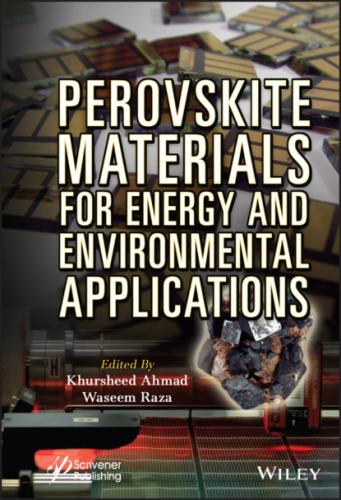When the electric fields and density gradients are present, the equation of continuity describes the behavior of excess carriers with time and in space:
(1.34)
(1.35)
where electron and hole concentrations are represented by n and p respectively. Jn and Jp are the electron current density and hole current density, Gn and Gp are the electrons and hole generation rates, Rn and Rp are the electron and hole recombination rates.
In steady state
Current density equations
Derivations focused on the transport theory given by Boltzmann have depicted that the current densities can be approximated in the continuity equations by the drift-diffusion model. In the present case, of the quasi Fermi levels EFn and EFp express the current densities:
(1.36)
(1.37)
Where μn and μp are the mobilities of the electrons and holes. The quasi-Fermi levels are linked to the carrier concentrations and the potential through the two Boltzmann approximations as follows:
(1.38)
(1.39)
To describe the quasi-Fermi levels these two equations may then be rewritten as:
(1.40)
(1.41)
By putting these equations into the expression for current density, the following current relationships can be attained:
Where Dn and Dp represent the electron and hole diffusion constants, respectively:
(1.44)
(1.45)
The final term in (1.42) and (1.43) reflects the difference in the effective concentration of the intrinsic carriers, taking into account the decreasing influence of the band-gap. Defining active electrical fields:
(1.46)
(1.47)
The drift-diffusion equations can then be written in more conventional form as.
(1.48)
(1.49)
Optical generation of electron-hole pairs
It is necessary to the operation of solar cells to produce electron-hole pairs by absorbing sunlight. Holes and electrons lead to the transition of energy carried by the photons of light into electrical energy.
The number of incident photons S0 (ν) (per unit area, per unit time and per unit energy) determine the number of generated electron-hole pairs. The photon flux S (x, ν) decreases inside the semiconductor exponentially as:
(1.50)
where ν is the frequency. The absorption process in the semiconductor determines the absorption coefficient α(ν).
At x distance from the surface of the semiconductor the generation rate G(x, ν) of electron-hole pairs can be obtained as:
(1.51)
Where R is the reflectance.
Here an assumption is made that one electron-hole pair is generated by each absorbed photon.
(III) Recombination phenomenon in semiconductors
Recombination is a course of annihilation or destruction of holes and electrons.
There are different mechanisms of recombination significant in the solar cell operation: band-to-band recombination or radiative recombination, Auger recombination, and recombination via defects or traps in the bandgap (often mentioned as Shockley-Read-Hall recombination or SRH). These processes are illustrated if Figure 1.1.
Figure 1.1 The different recombination processes in semiconductors.
A. Radiative recombination
Radiative recombination may be understood as the opposite of optical generation. This recombination takes place if a free electron drops out of the conduction band and recombine with a free hole in the valance band and a photon of energy equivalent to the difference in starting and ending energy states is released. For direct bandgap semiconductors, radiative recombination is very significant, but not as relevant for indirect semiconductors such as silicon, since a photon must also be absorbed or expelled for an electron to complete the transmission.
Due to radiative processes the net recombination rate is expressed as:
(1.52)
Where B is a material constant.
For n-type semiconductors under low injection (p0 ≤ p ≪ n0) the net rate of recombination can be given as:
(1.53)
The
